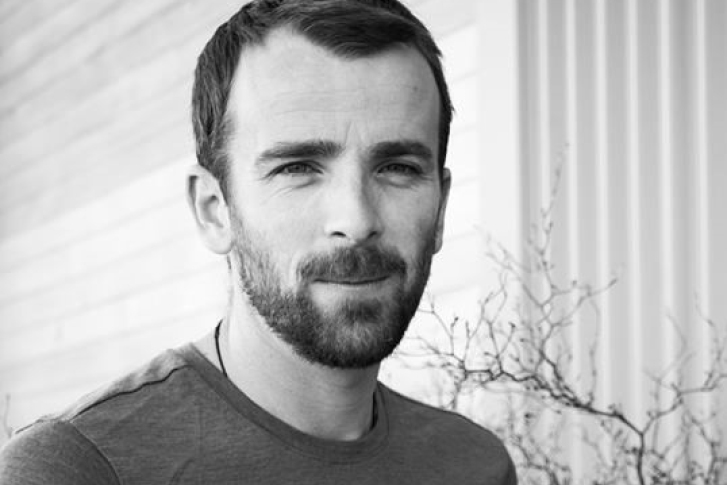On this page:
- Current and past daily forecast videos
- Example video output from previous flooding
- A co-design approach
- High resolution forecasting using a wealth of data
- Current research
- Research papers and reports
- In the news
- Want to know more or get in touch?
Help us improve this river flow forecasting tool
Current and past daily forecast videos
These animations show daily river flow forecasts for 24-hour periods across New Zealand - note disclaimer below and remember to check your local council data for accurate local information. You can use the controls at the top left to view a particular day.
Disclaimer: There is an inherent uncertainty in the range of outcomes from weather and hydrological model forecasts. The information contained in the forecast outputs are provided "as is". The National Institute of Water and Atmospheric Research Limited (NIWA) makes no representations or warranties regarding the accuracy, completeness or fitness for purpose of the forecast outputs. There may be delays, omissions or inaccuracies in information contained in the forecast outputs. Any reliance on or other use of the outputs by a party is entirely at that party’s own risk. NIWA accepts no liability to any party for any loss or damage, whether direct or indirect, consequential or otherwise, arising from any party’s reliance on or use of the forecast outputs.
Example video output from previous flooding
This video shows example outputs from the flow forecasting system that were used to predict two recent extreme weather events in New Zealand.
By providing accurate and reliable predictions of the effect of extreme rainfall on river levels, the New Zealand river flow forecasting project aims to provide a tool that will ultimately aid public safety. Producing a national-scale picture of where river flows will increase most during extreme rainfall events will help inform disaster preparedness and response efforts.
Flooding is the most frequent natural disaster in New Zealand. According to the Insurance Council of New Zealand, insurers have paid out more than $1.16 billion over the past 10 years to help people affected by storms and other severe weather events, and estimate uninsured costs to be at least the same again.
The river flow forecast tool provides hourly forecasts, with 48 hours lead time, for approximately 60,000 river reaches (Strahler 3) across New Zealand. The forecasts are displayed as relative flow values based on long-term flow simulations – these were generated from 40 years of climate records from hundreds of sites in NIWA’s Virtual Climate Station Network. The model predicts natural river flows but does not currently take into account irrigation or dams.
A co-design approach
We are working with people across the country, including in local and regional councils, to co-design, develop and test a tool that complements existing local models and tools.
By harnessing local knowledge of river catchments, sharing data and working together, we aim to develop a national-scale tool to meet the needs and priorities of stakeholders and decision makers.
High resolution forecasting using a wealth of data
The forecasting operation uses NIWA’s High Performance Computing facility to link NIWA’s national hydrological model with high-resolution weather model output and satellite and climate station data.
Current research
There are several streams of work currently underway in this work:
- We are working with councils and other stakeholders to gain feedback on the first iteration of the tool and its outputs. The system has been up and running since October 2018 so we have already accumulated a vast amount of data (around 10TB as at October 2019).
- We are working on validating the forecasts and moving from providing relative forecasts (above or below normal river levels) towards providing absolute values for river flows.
- An interactive Esri (GIS based) website is under development. This will enable more detailed views of individual river sites and access to the underlying ensemble approach to producing forecasts.
- River forecasting: capabilities versus user requirements. You can read more about this scoping and stakeholder research here.
Research papers and reports
- A national flood awareness system for ungauged catchments in complex topography: The case of development, communication and evaluation in New Zealand (Journal of Flood Risk Management 2022)
- Preliminary evaluation of a national river flow forecast system for New Zealand (NIWA SSIF report 2020)
- Calibrating Hourly Precipitation Forecasts with Daily Observations (Journal of Hydrometeorology 2020)
- Evaluating NZ river flow forecasts (poster presented to Hydrological Society annual conference, 2019) [PDF 4Mb]
- Enhanced probabilistic flood forecasting using optimally designed numerical weather prediction ensembles (Natural Hazards Research Platform 2019)
- An ensemble flow forecasting system for New Zealand—calibrating hourly precipitation forecast with daily observations (EGU General Assembly 2019)
- Validation of a national hydrological model (Journal of Hydrology, 2016)
- Coupling a high-resolution weather model with a hydrological model for flood forecasting in New Zealand (Journal of Hydrology, 2016)
- Operational hydrological data assimilation with the recursive ensemble Kalman filter (Hydrology and Earth Sciences, 2013)
- Hydrological data assimilation with the ensemble Kalman filter: Use of streamflow observations to update states in a distributed hydrological model (Advances in Water Resources, 2008)
- Application of TOPNET in the distributed model intercomparison project (Journal of Hydrology, 2004)
In the news
- December 2021: Keeping an eye on river flow (RNZ Our Changing World) (17 mins)
- July 2020: Fresh thinking – new solutions (NIWA Water & Atmosphere)
- March 2020: New Zealand’s first national river flow forecasting system for flooding resilience (New Zealand eScience Infrastructure case study)
- January 2020: NIWA meteorologist Chris Brandolino shows the river flow forecasting tool during Southland flooding on TVNZ (3mins20)
- December 2019: NIWA meteorologist Chris Brandolino demos the river flow forecasting tool on TVNZ.
Want to know more or get in touch?
Please use the details below to contact the river flow forecasting project team.





